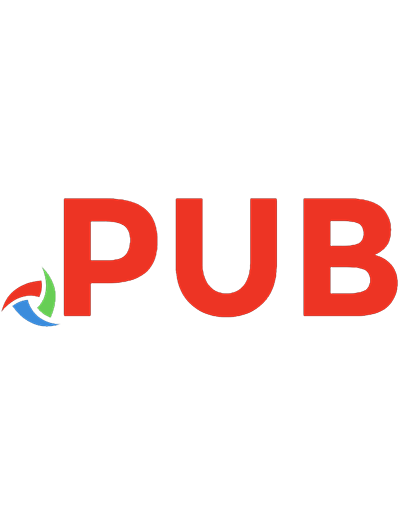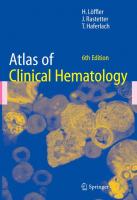Clinical atlas of human chromosomes [2 ed.] 047189205X, 9780471892052
487 99 27MB
English Pages 487 [520] Year 1984
Polecaj historie
Citation preview
r
CUNICAL
ATU^
OF HUMAN CHROMOSOMES
•li.v
'
/
/
N
V
BRONSON METHODIST HOSPITAL HEALTH SCIENCES LIBRARY KALAMAZOO, MICHIGAN
OfMCO
BRONSON MCTi :CDiST HOSPITAL HEALTH SCIENCES LIBRARY
\
1
]
1
j
-i
\
i
• ■ .
■ :■■
1&
**•
r
-If ■
CLINICAL ATLAS OF HUMAN CHROMOSOMES
CLINICAL ATLAS OF HUMAN CHROMOSOMES SECOND EDITION
Jean de Grouchy, M.D. Director of Research Head, Laboratoire de Cytogenetique de Humaine Comparee Hopital Necker-Enfants-Malades Paris, France
Catherine Turleau, M.D. Research Assistant Laboratoire de Cytogenetique de Humaine Comparee Hopital Necker-Enfants-Malades Paris, France
Foreword by Victor A. McKusick, M.D. William Osier Professor and Director Department of Medicine The Johns Hopkins University School of Medicine Physician-in-Chief Johns Hopkins Hospital Baltimore, Maryland
A WILEY MEDICAL PUBLICATION JOHN WILEY & SONS New York • Chichester • Brisbane • Toronto • Singapore
Cover and interior design: Wanda Lubeiska Production Supervisor: Audrey Pavey
An edition in the French language has been published by Expansion Scientifique under the title Atlas des maladies chromosomiques, deuxieme edition. Copyright © 1984 by John Wiley & Sons, Inc. All rights reserved. Published simultaneously in Canada. Reproduction or translation of any part of this work beyond that permitted by Sections 107 or 108 of the 1976 United States Copyright Act without the permission of the copyright owner is unlawful. Requests for permission or further information should be addressed to the Permissions Department, John Wiley & Sons, Inc.
Library of Congress Cataloging in Publication Data; Grouchy, Jean de. Clinical atlas of human chromosomes. (A Wiley medical publication) translation of: Atlas des maladies chromosomiques. Deuxieme 6d. Includes bibliographies and index. 1. Human chromosome abnormalities—Atlases. 2. Cytogenetics—Atlases. 3. Medical genetics—Atlases. 4. Abnormalities, Human—Atlases. I. Turleau, Catherine. II. Title. [DNLM: 1. Chromosome aberrations —Atlases. 2. Chromosome abnormalities—Atlases. 3. Chromosome mapping—Atlases. 4. Cytogenetics— Atlases. 5. Karotyping—Atlases. QS 17 G882a] RB44.G7613 1984 ISBN 0-471-89205-X
616'.042
Printed in the United States of America 10
987654321
83-16839
FOREWORD The organization that Drs. de Grouchy and Turleau have devised for their Atlas is innovative and highly useful. As a catalog of chromosomal anomalies, it is compara¬ ble to my catalog of Mendelian traits {Mendelian Inheritance in Man: Catalogs of Autosomal Dominant, Autosomal Recessive and X-Hnked Phenotypes, sixth edition, 1983). The de Grouchy-Turleau Atlas, however, is much more than a catalog of chromosomal anomalies; mapping information is also covered. Within the last 15 years since the advent of “banding methods” for chromosome study, a remarkable development has been the description of many “new” chromosomal syndromes. Chromosomal aberrations that previously could not be precisely defined yielded to analysis by the banding techniques. And, when cases thus shown to be chromosomally identical were analyzed phenotypically, a clinical syndrome often emerged. It is these rapid advances that are embraced by the de Grouchy-Turleau Atlas. It is also useful to have the information on genes assigned to specific chromosomes, a field to which the authors have contributed much and also of phenomenal advance in the last few years. The abundant illustrations of the clinical features, as well as of the karyologic features, and the succinct listing of the characteristics of each of the chromosomal syndromes should serve to fix them in mind. Many of the conditions are indeed physiognomonic diagnoses. High-resolution cytogenetics, available for the last seven years or so, has further refined the process of description of “new” chromosomal syndromes and has per¬ mitted demonstration of the chromosomal basis of some disorders previously etiologically mysterious, for example, the Prader-Willi or Langer-Giedion syndrome. The borderline between mendelian disorders and chromosomal aberrations has become blurred; mutation is a continuum from microscopically evident change to nucleotide substitution. Also with high-resolution cytogenetics, chromosome changes specific to particular forms of neoplasia have been established in increasing numbers in the last few years. The detailed information on chromosome changes in cancer fills a large catalog of its own (Felix Mitelmann, Cytogenetics and Cell Genetics 36:5-516, 1983). At the same time oncogenes in humans have been discovered by the methods of molecular genetics and localized to regions that show microscopic abnormality in particular neoplasms. The detailed study of chromosome aberrations has contributed to chromosomal mapping by providing information through the principle of deletion mapping (de Grouchy and Turleau contributed to this area by mapping, for example, the aden¬ ylate kinase gene to the end of the long arm of chromosome 9) and by dosage observations, for example, mapping of the glutathione reductase gene to chromo¬ some 8 by the study of trisomy 8 cases. Balanced translocations and heteromorphisms have been useful for chromosome mapping by conventional family linkage stud¬ ies—Duffy blood group was first assigned to chromosome 1 and haptoglobin to chromosome 16 by such an approach—but, in addition, balanced translocations have in recent times become unexpectedly informative in the mapping field, particularly in mapping the X chromosome, where assignment of the locus for Duchenne muscular dystrophy to Xp21 is a triumph. Application of the same principle to autosomal trans¬ location is likely to be increasingly observed. Cytogeneticists have the opportunity to make observations important to chromosome mapping through study of these experi¬ ments of nature. Conversely the mapping information now available can be very useful to the cytogeneticist in analyzing the nature of chromosomal aberrations by dosage affect. We welcome this new edition of a standard source book of human genetics. Victor A. McKusick, M.D. V
ni
it
VrSJ^’iP•. xttFtmivftb svBfl-\ -t4qSMn'5M*«Mo^^
' ■ wncip^otil:-
/liwv
^nj. pl ijl^
’.
'‘wof'**‘,ynant IQ fvi!?i;jho««tt ?jP f>««4 f e4J Jb aoo{»\fcdi^Pt?i>o^-d9fft ri#e.^’ioft.'»i&b io KJ0|o'Mts^ sb? rtQwoxrtl'.fK’ltem-jpItjr ^tU)tvpTO yp jjrtJTfpom ^fjtfceae ly’:«'’t:^ >0 ©rt ol'j>ieiy ' Aj 'rs-ifiibqwwiu »9;r. ijv y^jaiitiaiuini affpl ri .•'pifctoa' ^^iriQ9,fp ^bK>m iuib if wd)ppfm; ^.too^wmkjp pit* Crupgjfm .sb# vfe^t^K^ ■.■& w74a t?.»1V***’ «#(( tdt^vkiAir ni bf
■
; jy»'
-. _
> I , '
. .
pjty ♦4ftfft-^a>V7oJ^:ttMJ
-.
.'. ■="**r''-f}, ;..-«6n i.nryU ^ v • 1.’ r»: M.^L ,.. .■,r-,v. ...—'■ • v.-.,.;, I!-i,:v5T.;latii^J'*-to#•‘■>‘ ''i'"'atcupf-tj
,
,-\v' .»
![Clinical Atlas of Human Anatomy [8 ed.]
0702073335](https://dokumen.pub/img/200x200/clinical-atlas-of-human-anatomy-8nbsped-0702073335.jpg)
![Human Chromosomes [4 ed.]
9781461301394, 1461301394](https://dokumen.pub/img/200x200/human-chromosomes-4nbsped-9781461301394-1461301394.jpg)
![Human chromosomes [4th ed]
9781461301394, 9780387950464, 038795046X, 1461301394](https://dokumen.pub/img/200x200/human-chromosomes-4th-ed-9781461301394-9780387950464-038795046x-1461301394.jpg)



![Abrahams’ and McMinn’s Clinical Atlas of Human Anatomy [8th Edition]
9780702073342](https://dokumen.pub/img/200x200/abrahams-and-mcminns-clinical-atlas-of-human-anatomy-8th-edition-9780702073342.jpg)
![Sobotta Clinical Atlas of Human Anatomy [1 ed.]
9780702052736, 9780702052798](https://dokumen.pub/img/200x200/sobotta-clinical-atlas-of-human-anatomy-1nbsped-9780702052736-9780702052798.jpg)
![Atlas Of Human Anatomy [7 ed.]](https://dokumen.pub/img/200x200/atlas-of-human-anatomy-7nbsped.jpg)

![Clinical atlas of human chromosomes [2 ed.]
047189205X, 9780471892052](https://dokumen.pub/img/200x200/clinical-atlas-of-human-chromosomes-2nbsped-047189205x-9780471892052.jpg)